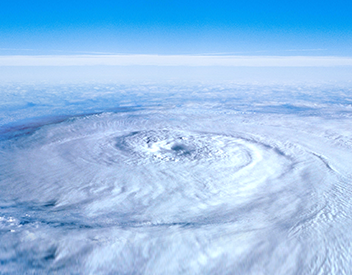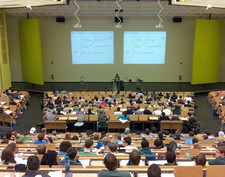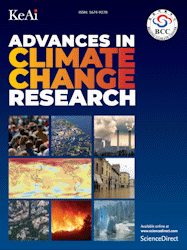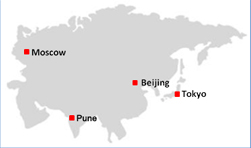FOCRAII 2013 Summary
2013-06-09
Report of the Ninth Session of the Forum on Regional Climate
Monitoring-Assessment-Prediction for Asia (RAII)
FOCRAII
8-10 April 2013
Beijing, China
Monitoring-Assessment-Prediction for Asia (RAII)
FOCRAII
8-10 April 2013
Beijing, China
Table of Contents
1. Executive Summary2. General Features of the Forum
3. Outcome of the Forum
4. Feedbacks from the Participants
Appendices
I: Climate Outlook for Asia (RA II), June-July-August (JJA) 2013II: Final Agenda
III: List of Participants
IV: List of Acronyms
1. Executive Summary
Having met in Beijing, China, from 8 to 10 April 2013, the Forum participants agreed on the following findings and recommendations:In addition to the contributions from established centers such as the ECMWF, Hadley Center/UK, CPC/NOAA, JMA, and KMA, experiences from other WMO Association Regions were shared. This is greatly appreciated by the participants.
The Forum reaffirmed the importance of the continuation and long-term sustainability of Climate Monitoring, Application and Prediction (CliMAP) programs and activities, including increased research and model developments, multi-model ensemble techniques and downscaling methods involving development of statistical downscaling and regional climate models (RCMs), education, training, capacity building, and outreach and urged the advanced climate centers within the region such as BCC and TCC to continue to host training and capacity building programs for the region on a regular basis.
The Forum discussed the outputs from various climate system models (BCC/CMA, ECMWF, CPC/NOAA, Hadley Center/UK, JMA, and APCC) and used these outputs, to produce a most likely seasonal climate outlook (attached as Appendix I to this report) for the RA II region for summer (June-July-August) of 2013. The prediction was also partly based on the predictions by the participants from China, China Hong Kong, China Macao, Indonesia, Japan, Kazakhstan, Republic of Korea, Laos, Malaysia, Mongolia, Pakistan, Philippines, Russia, Saudi Arabia, Tajikistan, Thailand, Yemen for their own countries/regions with various statistical and dynamic methods. Indeed, several suggestions have been discussed to improve the prediction by taking into account of model skills, regional patterns, etc. The prediction in the appendix should therefore be considered the results from an exercise rather than anything directly targeted to specific users.
It is agreed that BCC’s Initiatives of Pilot Projects for User Interface Programme is constructive. The communications between the end-users of climate products and services and the producers are important to improve the products and the services. In the meantime, the end-users can obtain a better understanding and make better use of the products.
l It is agreed that improvement in cooperation between RCC and NMHSs especially in data exchange and sharing is needed for better climate monitoring, prediction and assessment.
l The Forum encouraged more WMO RA II regional climate/monitoring centers to participate and share experiences in future forums.
2. General Features of the Forum
The FOCRAII held in Beijing, China, during 8-10 April 2013, sponsored by WMO and CMA, cosponsored by State Foreign Experts Affairs, WMO Training Center Nanjing and WMO East Asian Monsoon Activity Center/BCC, and hosted by the Beijing Climate Centre of CMA, was a response to addressing the needs of the RA II region for CliMAP (see Appendices III & IV for Final Agenda and List of Participants). The main objectives of the Forum are:
To review the progress made in the CliMAP programs and the activities both within RA II and the world with a specific focus on the challenges and opportunities in seasonal to inter-annual climate prediction methodologies and systems unique to the RA II region.
To provide a platform for the members of RA II to share and exchange experience and knowledge on CliMAP.
To build collaborations and partnerships among the members of RA II in the CliMAP programs as well as other international partners and activities.
To discuss collaborations among the members of RA II and other international partners to build an Asia-Pacific network of climate extreme events monitoring and assessment.(Or Building Plan for Monitoring and Assessment System of Extreme Weather-climate Events in Asia)
There were totally 90 participants from 27 countries/territories (Bulgaria, Canada, China, China Hong Kong, China Macao, DPR of Korea, France, Germany, Indonesia, Japan, Jordan, Kazakhstan, Laos, Malaysia, Mongolia, Pakistan, Republic of Korea, Philippines, Russia, Saudi Arabia, Senegal, Tajikistan, Thailand, United Kingdom, United States, Yemen and Zimbabwe). Dr. Leslie Malone, Representative of WMO, and Deputy Administrator of CMA, Ms. Jiao Meiyan attended the Forum.
The Forum was organized in nine sessions including invited lectures and oral presentations (see Appendix III for details).
3. Outcomes of the Forum
A “consensus” prediction of the summer climate in the RA II region and a CD-ROM including all presentations were produced.Broad consensus in enhancing cooperation between RCC and NMHSs for producing better climate information for RA II.
4. Feedbacks from the Participants
In the summary session, many participants took the chance to comment on the Forum, especially on how to improve discussing and exchanging of the seasonal forecast in Asian monsoon region. To further foster our common understanding and capability on the prediction of Asia summer monsoon, the Asian monsoon variation and the associated influencing factors of it should also be comprehensively diagnosed and predicted. Thus, the consensus interpretation of prediction can based on our common scientific understanding these important phenomena, such as the Asian Monsoon, ENSO, climate change including decadal variations, which are considered to have close relationship with climate variability in Asia.Overall, the participants were very happy with the preparations and conduct of the Forum. Also, majority of the participants was happy with the communications with the organizers on the objectives, content and necessary preparatory actions expected by the participants. Logistics arrangements were generally very satisfactory.
5. Side Events
Fourth BCC SAC Meeting
The Fourth Meeting of BCC Scientific Advisory Committee (BCC SAC) was held on 9 April. Totally 8 SAC members from France, Japan, Republic of Korea, UK and USA attended the meeting. The meeting has come up with constructive and useful suggestions, which will be summarized and considered properly by BCC. BCC will fully adopt and implement the SAC’s suggestions from the prospective of capacity-building and international cooperation.Host of the 1st EASCOF
Mongolia will host the 1st EASCOF(East ASia winter Climate Outlook Forum) which is formerly the Joint Meeting for the Seasonal Prediction of the East Asian Winter Monsoon. The time and place will be informed later. 










